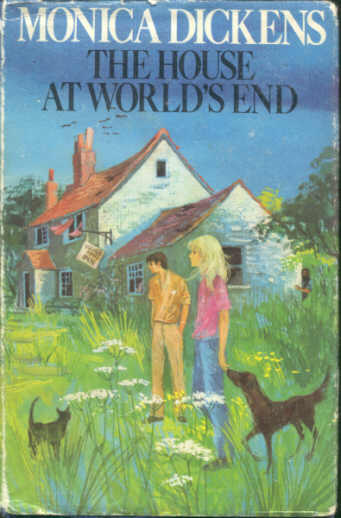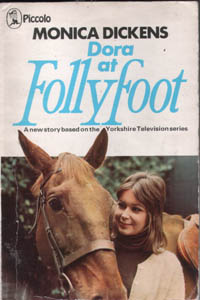Monica Dickens
'Surely,' I thought, 'there's something more to life than just going out to parties one doesn't enjoy, with people one doesn't even like? What a pointless existence it is - drifting about in the hope that something may happen to relieve the monotony. Something has got to be done to get me out of this rut.'
- from One Pair of Hands, Monica Dickens, 1939
Monica Dickens was the great granddaughter of Charles Dickens, and began her writing career with a mostly autobiographical account of her time as a cook-general, One Pair Of Hands (1939). During World War II she worked as a nurse in a hospital, and subsequently turned these experiences into One Pair Of Feet (1942). The furore this caused in the medical establishment ensured that "Nurse Diggins" would never work as a nurse again. Next came The Fancy (1943), in which she used her own experiences of working in a munitions factory, turning out Spitfires. She continued her semi-autobiographical stories with My Turn To Make The Tea (1951), detailing the experiences of a female reporter working for a small regional newspaper.
 Monica Dickens wrote for both adults and children, gifted not only in understanding her audience, but also in portraying her characters in a sympathetic yet unsentimental light. Monica Dickens wrote for both adults and children, gifted not only in understanding her audience, but also in portraying her characters in a sympathetic yet unsentimental light.
The four books in the World's End series follow the lives of Carrie (Caroline) Fielding and her three siblings, Tom, Em (Esmeralda) and the youngest, Michael.
The House at World's End (1970)
Summer at World's End (1971)
World's End in Winter (1972)
Spring Comes to World's End (1973)
"Nothing at World's End was complete or unbroken. Everything was cracked, chipped, leaky, patched up, propped up, and tied together with string. But it was theirs."
 Possibly her most well-known series was Follyfoot, which was made into a television series, though the television version of the story differed markedly from the original novels. Gillian Blake, as the female lead, was far more conventionally attractive than the serious, stolid, horse-loving Dora ever was in the books. Possibly her most well-known series was Follyfoot, which was made into a television series, though the television version of the story differed markedly from the original novels. Gillian Blake, as the female lead, was far more conventionally attractive than the serious, stolid, horse-loving Dora ever was in the books.
 The story of the rest home for horses was actually based on a previous novel written for adults, Cobbler's Dream (1963). Its horrifying message on the mistreatment of old and unwanted horses was toned down for the younger market in the Follyfoot series, but without the jolly tones and saccharine coating adopted by many writers. The story of the rest home for horses was actually based on a previous novel written for adults, Cobbler's Dream (1963). Its horrifying message on the mistreatment of old and unwanted horses was toned down for the younger market in the Follyfoot series, but without the jolly tones and saccharine coating adopted by many writers.
Follyfoot (1971)
Dora at Follyfoot (1972)
The Horses of Follyfoot (1975)
Stranger at Follyfoot (1976)
Horses were a serious love in her life, and she wrote Talking Of Horses (1973), a practical non-fiction book on the love and care of horses, with many anecdotes from her own life.
One of my most favourite of her works is Kate and Emma, written in 1964. This is an unemotional and yet moving account of how two girls from very different backgrounds become friends, and how that friendship endured despite the divergence of their lives.
Other books:
Mariana (1940)
Thursday Afternoons (1945)
Joy and Josephine (1948)
No More Meadows (1953)
The Winds of Heaven (1955)
The Angel In The Corner (1956)
The Heart Of London (1961)
My Fair Lady (1967) (Adaption of George Bernard Shaw's Pygmalion)
The Landlord's Daughter (1968)
Last Year When I Was Young (1974)
Dear Doctor Lily (1988)
Enchantment (1989)
Closed at Dusk (1990)
Scarred (1991)
One of the Family (1993)
Follyfoot Farm - the TV series location
TV Series: synopsis, episode titles, characters etc
|

